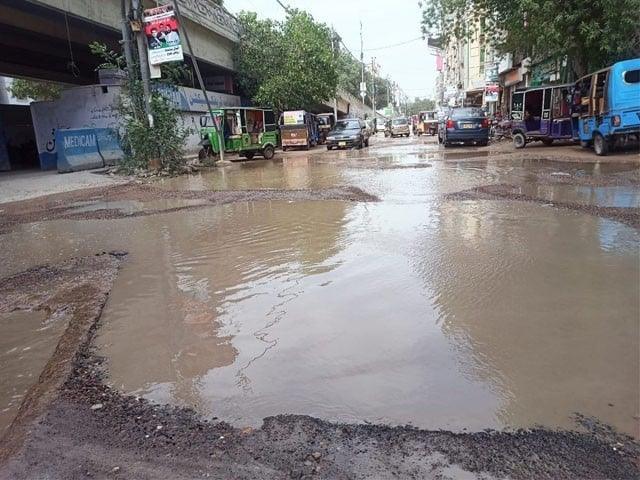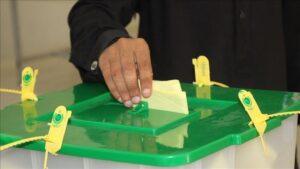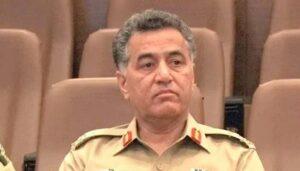KARACHI:
Unlike last New Year, the arrival of 2025 means the birth of the first cohort of Generation Beta babies, who are expected to grow up in a new world increasingly dominated by artificial intelligence and technological innovations.
However elegant it may seem, it is far from reality for the unfortunate child who will open his eyes this week in an average home in Karachi, where the past, present and future seem to revolve around the provision of urban needs. basic. .
Water, transportation and roads. The three incessant evils of Karachi. Even as another year draws to a close, no major project initiated under the supervision of the federal or provincial government could be completed on time, continuing the long tradition of slow development. While some projects were started even eight years ago and stopped midway, others faced delays in the start of key components, thus depriving the public of the intended benefits.
In the city of more than 30 million people, only 650 million gallons of water are supplied daily from two sources, the Indus River and the Hub Dam, which are insufficient to meet the daily water needs of the city of 1.2 billion. gallons. Despite the passage of two decades, no additional water has been drawn from the Indus River to address the shortfall. Although two mega projects were launched in 2016 to overcome the water crisis, despite the passage of 8 years, they could not be completed.
The first was the K-IV project, which was supposed to supply 260 million gallons of water to Karachi. Despite constant cost increases, the project faced delays, following which it was transferred from the Sindh government to the Water and Power Development Authority (WAPDA) in 2021. According to the new plan, the project should be completed by December of 2025.
“So far 50 per cent work on the K-IV project has been completed. If funds are released on time, the project will be completed soon,” a WAPDA official said.
However, sources have revealed that there are two more components of the K-IV project, the Expansion Plan and the power plant, which are yet to be launched. If both components are not completed on time, it will not be possible to supply water to Karachi from Keenjhar Lake.
Likewise, the second water supply project was the 65 million gallons per day (MGD) project, which has been stalled for five years due to lack of interest from the Sindh government. Only 15 percent of the project work has been completed, even though the project cost has nearly doubled. The project has now been scaled down at the government level and is being considered for construction on a public-private partnership basis.
When it comes to transportation, the port city is still facing a serious shortage of buses. Although there are 100 buses running on the Green Line Phase I and the Bus Rapid Transit Orange Line along with 280 air-conditioned buses under the People’s Bus Program, considering the city’s population, 8,000 more buses are still needed.
According to a survey conducted by the Express PAkGazette, 400 public transport routes have been closed. Currently only 135 lines are operational, on which between 3,000 and 4,000 buses, minibuses and coaches circulate.
“Despite the passage of three years and rising costs, construction work on Phase II of the Green Line has not started,” confirmed an official from the Sindh Mass Transport Authority.
On the contrary, an official of Sindh Infrastructure Development Company Limited assured that the construction work of Phase II of the Green Line should begin in four months and will be completed in a year.
Furthermore, the Orange Line project, which is 3.9 kilometers long from Orangi City office to Matric Board office, was completed two and a half years ago. However, very few passengers travel this route since it is not connected to the Green Line.
Construction work on the Red Line bus project began in 2022. In 2024, construction was suspended for six months for various reasons. Although the project was scheduled to be completed in 2025, it has now been postponed for another year. Similarly, the 26-kilometer-long Yellow Line project was also postponed until 2027.
On the other hand, several roads including MA Jinnah Road, New MA Jinnah Road, SM Taufiq Road, Shahrah-e-Pakistan, Rashid Minhas Road, Shahrah-e-Usman, Nishtar Road, Jail Road, Jamshed Road, Manghopir Road, Sher Shah Suri Road, Garden Road, Hub River Road and Korangi Industrial Area Road are in a bad state. While similar problems affect streets and other smaller streets throughout the city.
A KMC official, speaking on condition of anonymity, claimed that the KMC has allocated Rs 9 billion while the Sindh government has released Rs 3.3 billion for the annual development of the district for the current financial year.




